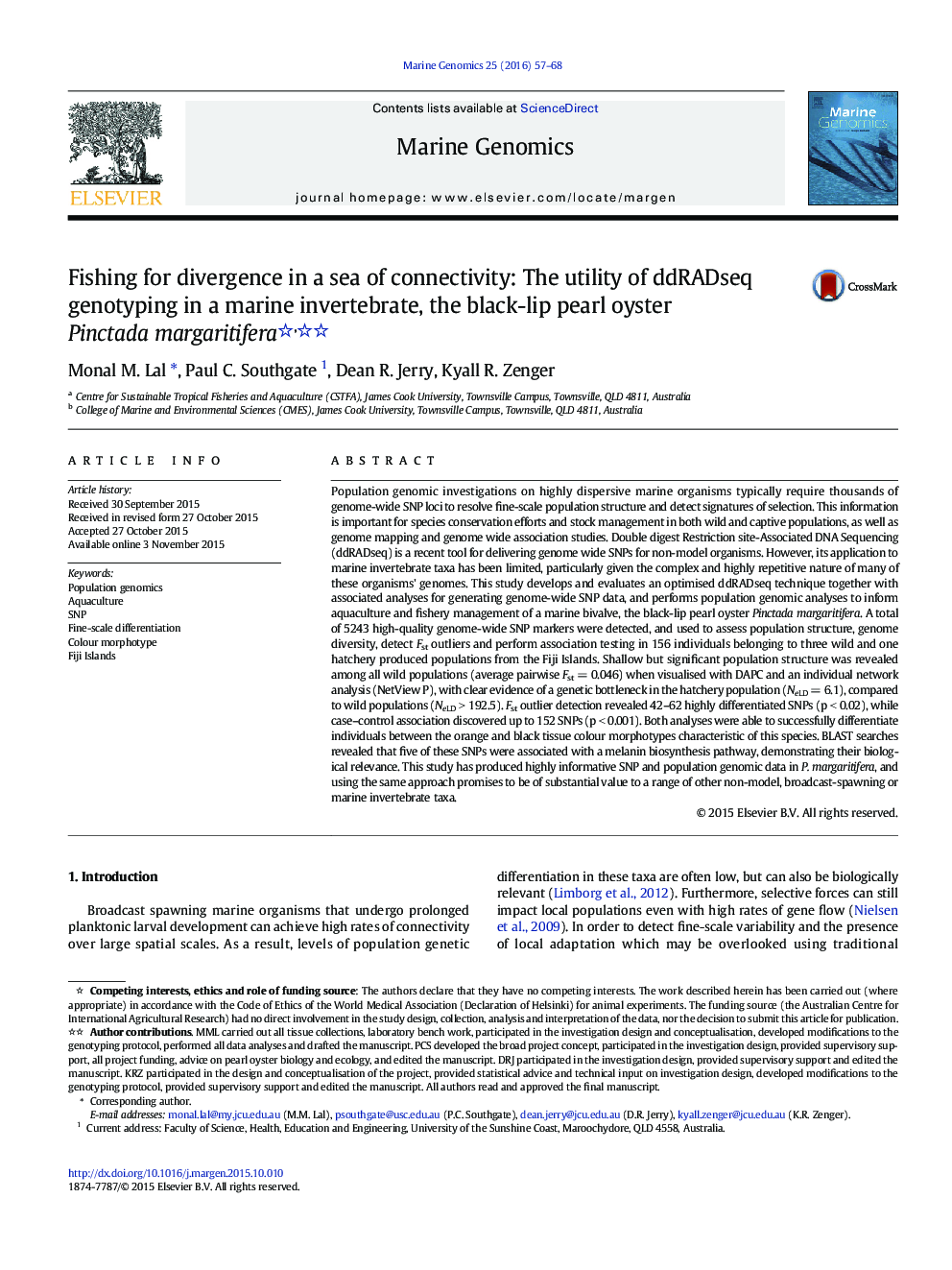| کد مقاله | کد نشریه | سال انتشار | مقاله انگلیسی | نسخه تمام متن |
|---|---|---|---|---|
| 2058136 | 1543925 | 2016 | 12 صفحه PDF | دانلود رایگان |
• ddRADseq assessed for marine invertebrate taxa, with P. margaritifera as an example
• Highly useful for detecting fine scale structure, selection and association testing
• Strong transferability to other high gene flow marine taxa
Population genomic investigations on highly dispersive marine organisms typically require thousands of genome-wide SNP loci to resolve fine-scale population structure and detect signatures of selection. This information is important for species conservation efforts and stock management in both wild and captive populations, as well as genome mapping and genome wide association studies. Double digest Restriction site-Associated DNA Sequencing (ddRADseq) is a recent tool for delivering genome wide SNPs for non-model organisms. However, its application to marine invertebrate taxa has been limited, particularly given the complex and highly repetitive nature of many of these organisms' genomes. This study develops and evaluates an optimised ddRADseq technique together with associated analyses for generating genome-wide SNP data, and performs population genomic analyses to inform aquaculture and fishery management of a marine bivalve, the black-lip pearl oyster Pinctada margaritifera. A total of 5243 high-quality genome-wide SNP markers were detected, and used to assess population structure, genome diversity, detect Fst outliers and perform association testing in 156 individuals belonging to three wild and one hatchery produced populations from the Fiji Islands. Shallow but significant population structure was revealed among all wild populations (average pairwise Fst = 0.046) when visualised with DAPC and an individual network analysis (NetView P), with clear evidence of a genetic bottleneck in the hatchery population (NeLD = 6.1), compared to wild populations (NeLD > 192.5). Fst outlier detection revealed 42–62 highly differentiated SNPs (p < 0.02), while case–control association discovered up to 152 SNPs (p < 0.001). Both analyses were able to successfully differentiate individuals between the orange and black tissue colour morphotypes characteristic of this species. BLAST searches revealed that five of these SNPs were associated with a melanin biosynthesis pathway, demonstrating their biological relevance. This study has produced highly informative SNP and population genomic data in P. margaritifera, and using the same approach promises to be of substantial value to a range of other non-model, broadcast-spawning or marine invertebrate taxa.
Black and orange colour morphotypes of the black-lip pearl oyster Pinctada margaritifera from Savusavu, Vanua Levu, Fiji Islands. Genome wide SNPs developed for this species were able to discriminate between both morphotypes within four Fijian populations. The scale bars represent 20 mm.Figure optionsDownload high-quality image (444 K)Download as PowerPoint slide
Journal: Marine Genomics - Volume 25, February 2016, Pages 57–68
